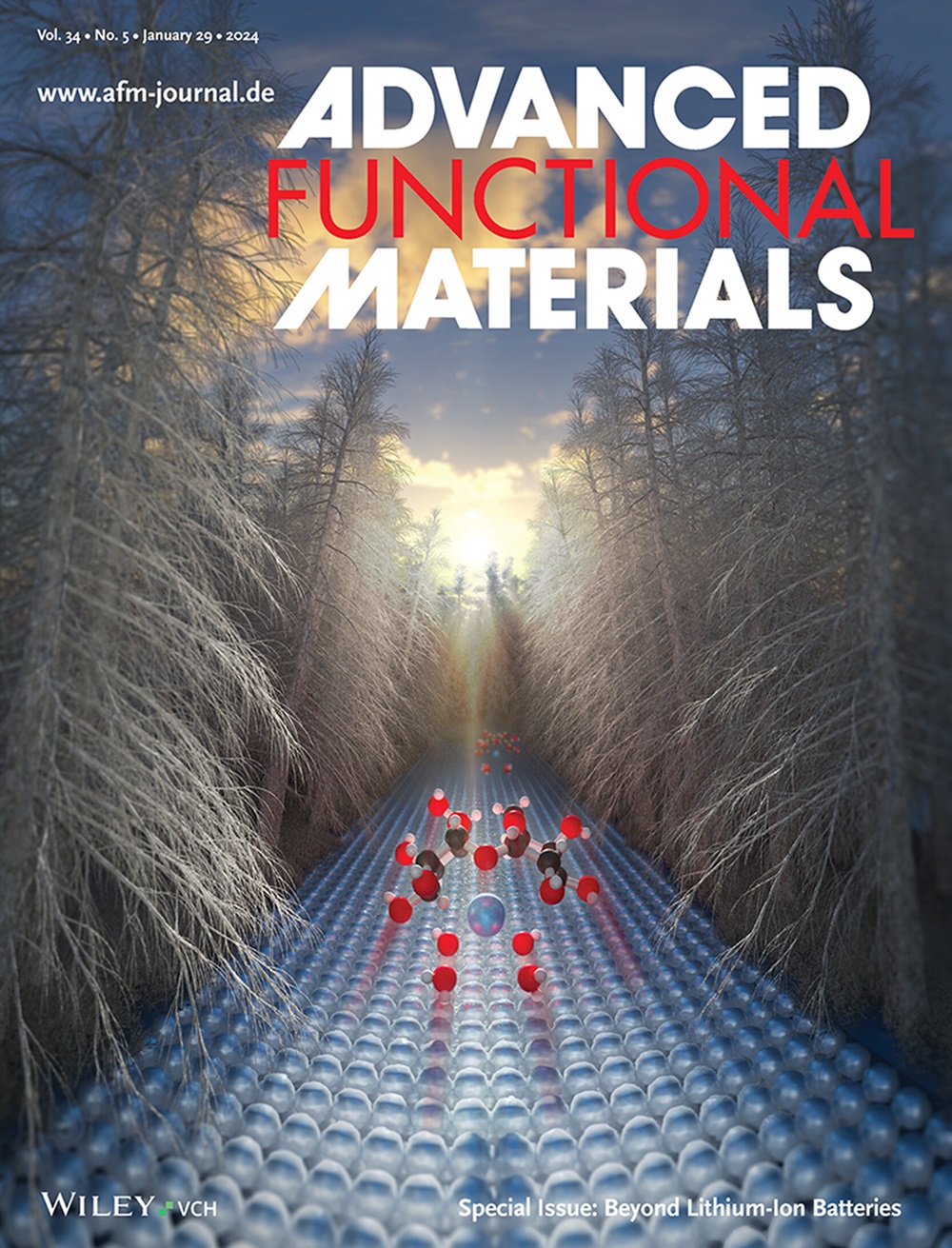High-Performance Perovskite Solar Cells via Synergistic Grating Microstructures and Dynamic-Bonded Ion-Conductive Elastomers
IF 18.5
1区 材料科学
Q1 CHEMISTRY, MULTIDISCIPLINARY
引用次数: 0
Abstract
Perovskite solar cells (PSCs) have emerged as a prominent focus in energy research owing to their remarkable power conversion efficiency (PCE). However, the realization, maintenance, and even repair of the high efficiency of perovskite solar cells are still difficult research issues. Herein, a synergistic strategy of grating microstructures and ion-conducting elastomers (ICE) based on dynamic hindered urea-carbamate bonds is proposed to realize high-efficiency and long-term stable PSCs. The grating microstructured PbI2 (G-PbI2) can initially optimize the crystallization behavior of perovskite, based on the fact that the introduction of ICE in PbI2 achieves 25.61% efficient PSCs. The ICE featuring graded hindered urea-carbamate dynamic bonds demonstrates triple-functionality: i) Abundant carbonyl (-C(O)-) coordination sites within the ICE strongly interact with PbI2, enhancing perovskite crystallization kinetics; ii) The ICE intrinsic conductivity facilitates efficient charge carrier transport and extraction at grain boundaries and interfaces; iii) The moisture-responsive behavior of hindered urea bonds coupled with dynamic bond reorganization endows the device with exceptional hydrothermal stability (T80>1500 h), and even more interestingly, ICE-containing devices can be simply heat-treated to recover photovoltaic performance. A synergistic strategy of ICE based on hierarchical dynamic covalent networks and microstructures opens new insights into the field of constructing, maintaining, and restoring high-efficiency PSCs.

基于协同光栅微结构和动态键合离子导电弹性体的高性能钙钛矿太阳能电池
钙钛矿太阳能电池(PSCs)由于其卓越的能量转换效率(PCE)而成为能源研究的一个突出热点。然而,高效钙钛矿太阳能电池的实现、维护乃至修复,仍是研究难题。为此,提出了一种基于动态受阻脲氨基甲酸酯键的光栅微结构和离子传导弹性体(ICE)协同策略,以实现高效、长期稳定的PSCs。光栅微结构PbI2 (G-PbI2)可以初步优化钙钛矿的结晶行为,因为在PbI2中引入ICE可以获得25.61%的高效PSCs。具有梯度阻碍尿素-氨基甲酸酯动态键的ICE具有三重功能:i) ICE内丰富的羰基(- c (O)-)配位位点与PbI2强烈相互作用,增强钙钛矿结晶动力学;ii) ICE的本征电导率促进了晶界和界面上载流子的高效输运和萃取;iii)受阻尿素键的水分响应行为加上动态键重组使该器件具有优异的水热稳定性(T80>1500 h),更有趣的是,含有ice的器件可以简单地热处理以恢复光伏性能。基于分层动态共价网络和微观结构的ICE协同策略为构建、维护和恢复高效psc领域开辟了新的见解。
本文章由计算机程序翻译,如有差异,请以英文原文为准。
求助全文
约1分钟内获得全文
求助全文
来源期刊

Advanced Functional Materials
工程技术-材料科学:综合
CiteScore
29.50
自引率
4.20%
发文量
2086
审稿时长
2.1 months
期刊介绍:
Firmly established as a top-tier materials science journal, Advanced Functional Materials reports breakthrough research in all aspects of materials science, including nanotechnology, chemistry, physics, and biology every week.
Advanced Functional Materials is known for its rapid and fair peer review, quality content, and high impact, making it the first choice of the international materials science community.
 求助内容:
求助内容: 应助结果提醒方式:
应助结果提醒方式:


